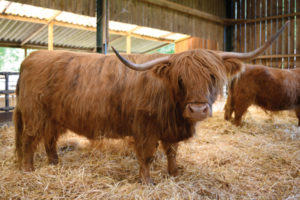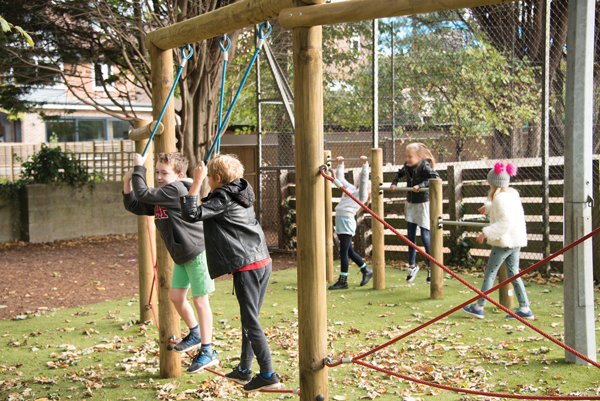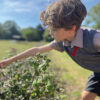by Sam Selkirk
Head of Lower School at Reigate St Mary’s
Once asked by a university lecturer, what was my most enduring childhood memory, it didn’t take long to remember. Of course it was the hours I spent outside, playing with my siblings, my friends, no constraints and – most importantly – no adults looming. Our parents gave us clear instructions on where we could and couldn’t go, and what time we needed to return home; but freedom and the room to be independent was afforded to us. The expectation was that we made our own fun. I wonder if the same could be said now?
What do we mean by independence? The Cambridge dictionary definition is: ‘the ability to live your life without being helped or influenced by other people’. For young children it is about becoming an independent person which incorporates self-esteem and relationships with others; being independent with life skills and becoming an independent learner – finding things you need, asking questions, solving problems, thinking critically and for yourself, for example.
Where does it start? More recently, I was shown a YouTube clip – Ruby reaches for a toy https://www.youtube.com/watch?v=5Q2cL-WteZk: The clip was about three minutes long and showed six month old Ruby’s determination to reach a toy. I have since used this at a parent information evening and also during an assembly to four to seven year olds – their response was magical, they got it, this little baby could overcome barriers and reach the toy for herself. An extrinsic reward did not need to be dangled to entice Ruby, her satisfaction was evident when she began to play with the toy; it was intrinsic. During the video I was overcome by two thoughts, the first being: just help her get the toy – which I quickly dismissed – and secondly, how this short clip summed up so much of what I believe in. In allowing children to do things for themselves, they will undoubtedly develop the essential life skill of independence.
So how do we develop this? Evidence suggests that the ability to think and behave independently is possessed from a very early age. As such we need to nurture it in babies and young children. Reflecting on our behaviour is perhaps a good place to start: what have I done today for a child, which they could have done for themselves? As Lella Gandini of Reggio Emilia states: “children are strong, rich and capable. All children have preparedness, potential, curiosity and interest in constructing their learning, negotiating with everything their environment brings to them.”
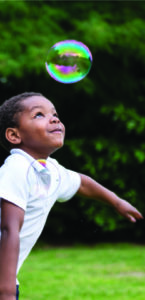 So how do we help a child become that independent person? As adults we need to find a balance between not overprotecting our children, or pressurising them to run before they can walk; our expectations need to be realistic, and we must bear in mind that children will always develop at very different rates. The ‘Early Years Development Matters’ takes us through a child’s Personal, Social and Emotional Development and exemplifies the ‘Characteristics of Effective Learning’ from birth to five years old; some good ideas and guidance may be found in the DfE document ‘What to expect, when?’ which has been developed for parents and carers. Furthermore, it is important that we encourage healthy risk taking, through climbing trees or doing something new, and the opportunity to embrace mistakes. In the words of Carol Dweck: “What we do not want is to encourage a fixed mind set where a child feels they are unable to do something for themselves so they will not try, we want a child who is comfortable trying for themselves and develops a growth mind set – they will experience the feeling that before success comes failure after failure. But that hard work and persistence works.”
So how do we help a child become that independent person? As adults we need to find a balance between not overprotecting our children, or pressurising them to run before they can walk; our expectations need to be realistic, and we must bear in mind that children will always develop at very different rates. The ‘Early Years Development Matters’ takes us through a child’s Personal, Social and Emotional Development and exemplifies the ‘Characteristics of Effective Learning’ from birth to five years old; some good ideas and guidance may be found in the DfE document ‘What to expect, when?’ which has been developed for parents and carers. Furthermore, it is important that we encourage healthy risk taking, through climbing trees or doing something new, and the opportunity to embrace mistakes. In the words of Carol Dweck: “What we do not want is to encourage a fixed mind set where a child feels they are unable to do something for themselves so they will not try, we want a child who is comfortable trying for themselves and develops a growth mind set – they will experience the feeling that before success comes failure after failure. But that hard work and persistence works.”
In many ways it is easier to identify the opportunities we can give our children to be independent when developing life skills, such as encouraging them to get dressed in the morning, cutting their own food, opening packets and having a go at pouring a drink, tidying up their toys, being provided with a cloth to mop up spills, to name but a few. Furthermore, many of these activities help a child’s physical development, therefore, providing a sound foundation for writing and drawing – a win win situation!
We also need to enhance a child’s innate desire to learn and explore. To do this we must ensure the home environment is ordered (a little like an Early Years classroom) and children know where to find things. Offering a couple of choices – such as what to eat at snack time or wear, (it is important not to ignore a child’s choice, as this will undermine their self-assurance) – and making decisions will enable them to develop their own thoughts, views and critical thinking. Allowing children to pursue their own plans, giving them the opportunity to choose what to play with and then leaving them for uninterrupted learning for increasing lengths of time in a safe environment further supports independence.
The report, ‘Developing Independent Learning in children aged three to five’, by the Faculty of Education, University of Cambridge says:”Learning is intrinsic to life and because it is this important children need to be the owners of their own learning; they won’t see it as intrinsic to life if they don’t own it themselves – everything they do must have a purpose which makes sense to them.”
As already mentioned, children develop at varying rates; and as such it is important to know where each individual is on their journey, so we may support them in the next step. For example, if a child can put on their coat, demonstrate, explain and encourage them to do up the zip. New skills may need practising, help may still be needed; but practice will ensure independence in learning new skill sets. In the words of Maria Montessori “Never help a child with a task at which he feels he can succeed” and Lev Vygotsky “What a child can do with assistance today she will be able to do by herself tomorrow.” Giving time is essential too, though it may be quicker at this point to do it for them, in the long run encouraging independence will save us time and help our children grow.
Ignatius of Loyola sums up the responsibility upon us as adults: “Give me a child until he is seven and I will give you the man”. Now, all we need to do to ensure we provide children with the best ‘independent’ start in life, is to permit them to feel in control of their lives, confident and capable, provide them with opportunities to master new skills, think for themselves and afford responsibility – job done!
Reigate St Mary’s is a coeducational day school for pupils aged 2 to 11 set in 15 acres of beautiful parkland close to Reigate town centre. It is a junior school of Reigate Grammar School with an emphasis on nurturing confidence and self-esteem to produce happy learners.
High quality wraparound care is available onsite for all pupils aged 2 and above for 48 weeks of the year.
www.reigatestmarys.org


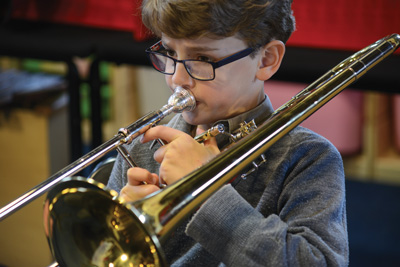
 Through events like Brighton Festival, young people can explore, discover and participate in the arts. For 30 years the Children’s Parade has officially marked the start of Brighton Festival, with over 5,000 participants, including 3,473 school children, stepping into show stopping costumes they have designed and made themselves. Around 10,000 people come along to see the parade and be part of the largest annual children’s event in the UK. The parade is a unique event produced by community arts organisation, Same Sky, which offers thousands of young people the chance to come together in creations they’ve designed around a central theme, giving them a sense of belonging. In 2020, the Children’s Parade theme is Nature’s Marvels, offering a platform for participants to think more about the world and environment around them.
Through events like Brighton Festival, young people can explore, discover and participate in the arts. For 30 years the Children’s Parade has officially marked the start of Brighton Festival, with over 5,000 participants, including 3,473 school children, stepping into show stopping costumes they have designed and made themselves. Around 10,000 people come along to see the parade and be part of the largest annual children’s event in the UK. The parade is a unique event produced by community arts organisation, Same Sky, which offers thousands of young people the chance to come together in creations they’ve designed around a central theme, giving them a sense of belonging. In 2020, the Children’s Parade theme is Nature’s Marvels, offering a platform for participants to think more about the world and environment around them.

 If it’s not possible to escape the colder months here in the UK and jet off to sunnier climes this year, then we might all just need to be a bit more creative in order to make sure we can still enjoy the great outdoors.
If it’s not possible to escape the colder months here in the UK and jet off to sunnier climes this year, then we might all just need to be a bit more creative in order to make sure we can still enjoy the great outdoors.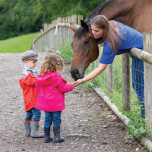 Leave the picnic at home
Leave the picnic at home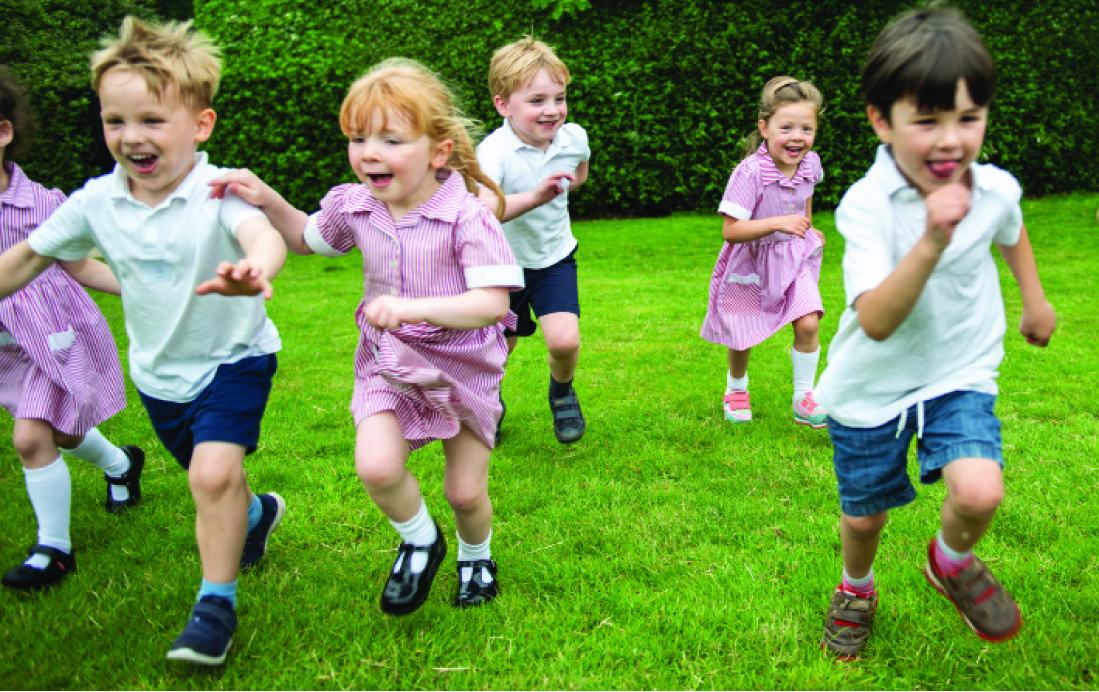
 So how do we help a child become that independent person? As adults we need to find a balance between not overprotecting our children, or pressurising them to run before they can walk; our expectations need to be realistic, and we must bear in mind that children will always develop at very different rates. The ‘Early Years Development Matters’ takes us through a child’s Personal, Social and Emotional Development and exemplifies the ‘Characteristics of Effective Learning’ from birth to five years old; some good ideas and guidance may be found in the DfE document ‘What to expect, when?’ which has been developed for parents and carers. Furthermore, it is important that we encourage healthy risk taking, through climbing trees or doing something new, and the opportunity to embrace mistakes. In the words of Carol Dweck: “What we do not want is to encourage a fixed mind set where a child feels they are unable to do something for themselves so they will not try, we want a child who is comfortable trying for themselves and develops a growth mind set – they will experience the feeling that before success comes failure after failure. But that hard work and persistence works.”
So how do we help a child become that independent person? As adults we need to find a balance between not overprotecting our children, or pressurising them to run before they can walk; our expectations need to be realistic, and we must bear in mind that children will always develop at very different rates. The ‘Early Years Development Matters’ takes us through a child’s Personal, Social and Emotional Development and exemplifies the ‘Characteristics of Effective Learning’ from birth to five years old; some good ideas and guidance may be found in the DfE document ‘What to expect, when?’ which has been developed for parents and carers. Furthermore, it is important that we encourage healthy risk taking, through climbing trees or doing something new, and the opportunity to embrace mistakes. In the words of Carol Dweck: “What we do not want is to encourage a fixed mind set where a child feels they are unable to do something for themselves so they will not try, we want a child who is comfortable trying for themselves and develops a growth mind set – they will experience the feeling that before success comes failure after failure. But that hard work and persistence works.”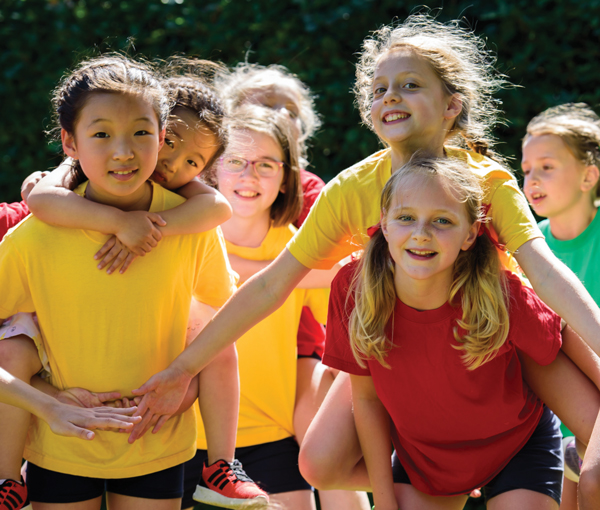
 In the first term, establish a good rapport with your child’s teacher and encourage their early reading and writing at home as advised by the school. Ask what happens in the book that they are reading, and help with extending their vocabulary to include words such as ‘first, second, finally.’ Don’t be scared to use the correct vocabulary –
In the first term, establish a good rapport with your child’s teacher and encourage their early reading and writing at home as advised by the school. Ask what happens in the book that they are reading, and help with extending their vocabulary to include words such as ‘first, second, finally.’ Don’t be scared to use the correct vocabulary – the first year your child will be very attached to their first teacher and the school will prepare them for moving on to a new class, possibly with new pupils arriving too which can change the dynamic amongst the class. Over the first long summer break encourage more constructive play which requires your child to build things, take things apart and put them back together. Go on walks, build dens in the garden, start to ride a bike with stabilisers. Check table manners and correct use of cutlery and ‘please and thank yous.’ Use the days of the week more and continue with reading and basic writing.
the first year your child will be very attached to their first teacher and the school will prepare them for moving on to a new class, possibly with new pupils arriving too which can change the dynamic amongst the class. Over the first long summer break encourage more constructive play which requires your child to build things, take things apart and put them back together. Go on walks, build dens in the garden, start to ride a bike with stabilisers. Check table manners and correct use of cutlery and ‘please and thank yous.’ Use the days of the week more and continue with reading and basic writing.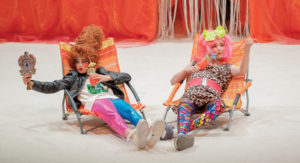 Then come swimming lessons, possibly picking up an instrument for the first time, presenting in assembly and taking on minor roles of responsibility within the class (taking a message to the office or assisting with classroom chores). You will increasingly feel that you are not there for every milestone moment. This is important as your child will be forming a self-esteem based on their sense of their own achievements and by six we hope finding intrinsic motivation. They will be working out that effort impacts outcomes and they will be turning to peers to share their achievements. Winning the sack race, learning their times tables, holding the door open for a visitor, sharing their snack at break are all equally important.
Then come swimming lessons, possibly picking up an instrument for the first time, presenting in assembly and taking on minor roles of responsibility within the class (taking a message to the office or assisting with classroom chores). You will increasingly feel that you are not there for every milestone moment. This is important as your child will be forming a self-esteem based on their sense of their own achievements and by six we hope finding intrinsic motivation. They will be working out that effort impacts outcomes and they will be turning to peers to share their achievements. Winning the sack race, learning their times tables, holding the door open for a visitor, sharing their snack at break are all equally important.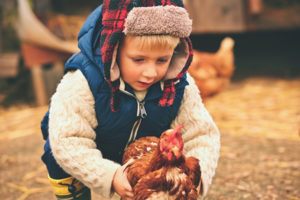 There’s no such thing as bad weather – just the wrong clothes, or so the saying goes…
There’s no such thing as bad weather – just the wrong clothes, or so the saying goes…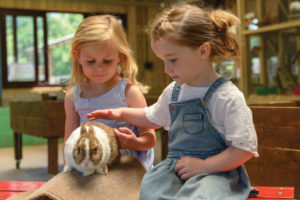 1 Seek out the animals who love the cold weather! You’ll find many types of animals in a farm park, especially those who just love the winter months. Highland cows are a great example of a hardy breed and they look pretty impressive even if a bit wet and bedraggled! Many of the farm attractions now have interesting ways to feed some of the animals yourselves, plus opportunities to book in for exclusive experiences – we have introduced a Mini Farmer experience and it has been a huge hit.
1 Seek out the animals who love the cold weather! You’ll find many types of animals in a farm park, especially those who just love the winter months. Highland cows are a great example of a hardy breed and they look pretty impressive even if a bit wet and bedraggled! Many of the farm attractions now have interesting ways to feed some of the animals yourselves, plus opportunities to book in for exclusive experiences – we have introduced a Mini Farmer experience and it has been a huge hit.